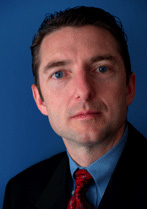The property/casualty industry will not likely experience a traditional hard market in 2012 or 2013, despite recent rate increases, according to Robert
Hartwig, president and economist of the Insurance Information Institute, who spoke to a group of reinsurance actuaries at the Casualty Actuarial Societys Seminar on Reinsurance.
Hartwig noted four necessary criteria for a hard market, one marked by sharply rising rates in excess of 10 to 15 percent.
The industry must endure a sustained period of large underwriting losses. Only when underwriting losses are large and sustained do insurers turn disciplined, Hartwig said. Last year, underwriting losses were $36.5 billion due to U.S. catastrophes, including Tornadoes in Joplin, Mo., and Tuscaloosa, Ala., and elsewhere. Adjusted for inflation, 2011 was the fifth-worst year on record for insured catastrophe losses in the United States. However, to date, catastrophes have been light in 2012.
The industry must suffer a decline in industry surplus or capacity, resulting in rising rates. But industry surplus remains high, Hartwig said, hitting a record $565 billion as of first quarter 2011 and falling off only slightly during 2011, despite catastrophic losses.
The cost of reinsurance must be rising, accompanied by a shortage of reinsurance capital. This is somewhat the case, as excess capacity in reinsurance in early 2011 was consumed by earthquakes in Japan and New Zealand and floods in Thailand. In the United States, reinsurance prices for catastrophe business have risen 8 percent. However, relative to 1993, when Hurricane Andrew hit, rates rose 68 percent; after Hurricane Katrina, rates rose 76 percent. Further, Hartwig said this notion that somehow big catastrophe losses are somehow [by themselves] going to affect prices here, is incorrect.
Finally, the industry must increase discipline in underwriting and pricing discipline, which may be occurring for commercial lines after having declined for years. In the first quarter, commercial insurance rates rose 4.4 percent, which was the third consecutive quarterly increase; however, that followed 30 consecutive quarters of declining rates, according to the Council of Insurance Agents and Brokers.
In the first quarter, workers compensation rates rose fastest at 7.4 percent, but only because of the deterioration they had endured. Over the past three years, workers comp combined ratios were 110.6, 116.8 and 115.0, compared with 99.5, 101.0 and 107.5 for commercial lines overall.













 Economist Robert Hartwig reviews four factors necessary for sustained, double-digit rate increases.
Economist Robert Hartwig reviews four factors necessary for sustained, double-digit rate increases.